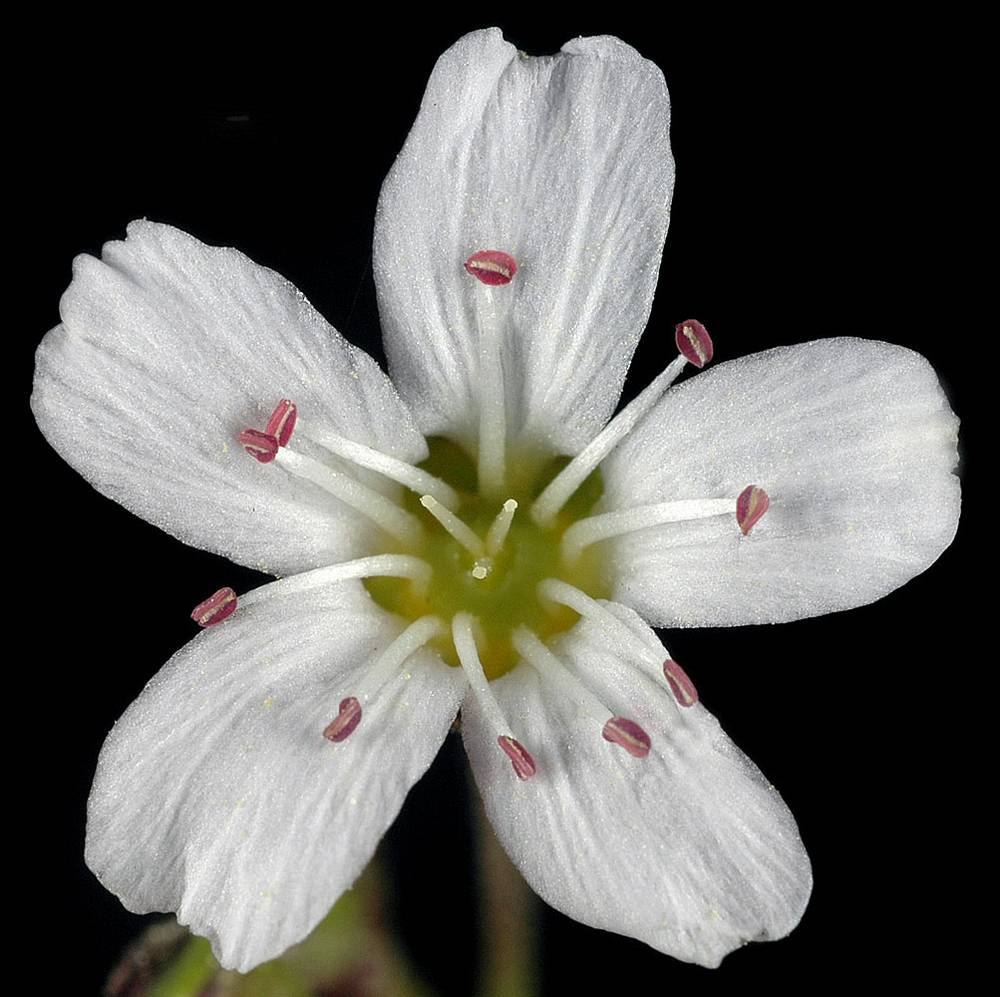
Plants tufted or sometimes mat-forming, green.
Stems 5–20(30) cm, glabrous or glabrous below and glandular-hairy above.
Leaves basal straight or often curved in one direction, 20–80 mm, flexuous, not fleshy, tips spinose; cauline 2–5 pairs, gradually reduced above.
Inflorescences open; flowers 1–12(18); pedicels (2)5–20 mm, glandular-hairy.
Flowers sepals 3–4.7 mm, to 5 mm in fruit, tips broadly rounded to barely acute; petals 6–10 mm.
Fruits 5–8 mm, valves glandular-hairy.
Seeds elliptic to ovoid, (1.2)1.5–2(2.5) mm, brown to black, tuberculate.
2n=22.
Coniferous forests, rocky and gravelly slopes. Flowering May–Sep. 100–2800 m. BR, BW, Casc, ECas. ID, NV, WA; north to British Columbia, northeast to Alberta and MT. Native.
Eremogone capillaris var. americana is known from forested regions of the northern Cascades. Specimens identified as this species in eastern Oregon are likely from populations that Baad (1969) noted as intermediate between E. capillaris var. americana and E. kingii var. glabrescens. While they may bear some resemblance to this taxon, most lack glandular hairs on the capsules and pedicels and are better considered as E. kingii var. glabrescens or occasionally E. congesta var. prolifera.
as described under Eremogone capillaris var. americana
Stems (3-)5-15(-25) cm, glabrous and glaucous proximally, stipi-tate-glandular distally. Pedicels stipitate-glandular. Flowers: sepals stipitate-glandular; ovary often with uniseriate, 3-8-celled hairs in proximal 1/ 2 or throughout. Capsules often with uniseriate, 3-8-celled hairs in distal 1/ 2 or throughout. 2n = 22.Flowering late spring-summer. Alpine meadows, talus slopes, aspen woods; 1200-3000 m; Alta., B.C.; Idaho, Mont., Nev., Oreg., Wash.M. F. Baad (1969) reported populations from Idaho, Nevada, Oregon, and Wyoming that he considered to be intermediate between var. americana and Eremogone kingii var. glabrescens, and one from central Washington that he considered to be intermediate between var. americana and E. congesta var. prolifera.